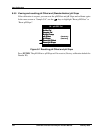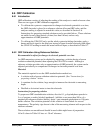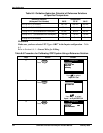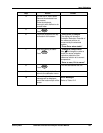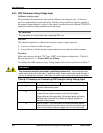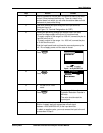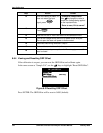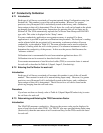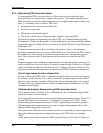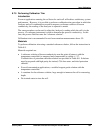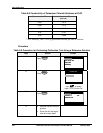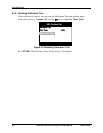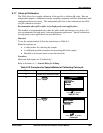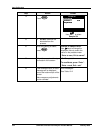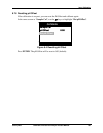
Input Calibration
158 UDA2182 Universal Dual Analyzer Product Manual January 2009
8.7.4 Determining TDS conversion factor
To determine the TDS conversion factor, it is first necessary to establish the total
dissolved solids in a representative sample of the process. The formal determination of
TDS is a laboratory standard method performed on a weighed grab sample of the process
fluid. To summarize how to obtain a TDS value:
• Suspended solids, if present, are filtered out.
• All water is evaporated.
• The residue is dried and weighed.
• The result is divided by the original sample weight to obtain ppm TDS.
For detailed guidance in determining the official TDS, see “Standard Methods for the
Examination of Water and Wastewater,” jointly published by the American Public Health
Association, American Water Works Association and Water Pollution Control Federation,
Washington, DC.
To determine the conversion factor needed by the Analyzer, first use the laboratory
procedure summarized above to give an official TDS value. Next divide the TDS value by
the conductivity of the sample to yield the conversion factor for that particular process
fluid. The conversion factor is then entered into the analyzer to normalize the TDS
readout.
With power plant cation conductivity measurements, ion chromatography results may be
used to establish the conversion factor for readout in ppb chloride or sulfate ion. Nominal
values are 83 ppb per
μS/cm for chloride ion and 111 ppb per μS/cm for sulfate ion. The
analyzer does not provide temperature compensation in TDS for chloride or sulfate ions.
Out-of range-values forced to closest limit
As long as the entered TDS value is within the acceptable limits for a given cell constant,
the Analyzer accepts the value. If a value is outside the accepted range, the unit will not
display an error message; instead it will force the value to either the high or low limit of
the range of the cell constant. Refer to Table 6-5 (Input1/Input2/Conductivity) for TDS
conversion factor defaults.
Calibrate the Analyzer before entering TDS conversion factor
If you intend to enter a cal factor or use calibration trim, do so before entering the TDS
conversion factor as described here.
If you use calibration trim, first set the solution temperature compensation in Table 6-5 to
the non-TDS choice for your process. For example, if you plan to use “NaCl” set the
solution temperature compensation type to “NaCl” temporarily for calibration purposes.
(Solution temperature compensation type is the one Input setup parameter that can be
changed without triggering a cold reset.)
Next, perform the calibration. Once calibration has been completed, go back to Input setup
and set the solution temperature compensation type to the TDS choice, for example
“NaCl”.
At this point you are ready to enter the TDS conversion factor as described in Table 6-5.



